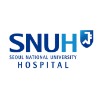
Study Comparing Clindamycin Phosphate and Benzoyl Peroxide Gel to Acanya® Gel and Both to a Vehicle...
Acne VulgarisThe objective of this study is to compare the safety and efficacy profiles of Taro Pharmaceutical Inc.'s Clindamycin Phosphate and Benzoyl Peroxide Gel 1.2%/2.5% to Acanya® (Clindamycin Phosphate and Benzoyl Peroxide) Gel, 1.2%/2.5% and to demonstrate the superior efficacy of the two active formulations over that of the vehicle in the treatment of acne vulgaris.

Study to Investigate the Irritation Potential of GSK1940029 Gel
Acne VulgarisThe proposed indication for GSK1940029 is topical treatment of acne, the early clinical plan will evaluate the irritation potential of GSK1940029 (Study SCD117225 - 3 Part study); and safety, tolerability and pharmacokinetics of GSK1940029 (Study SCD117226 - 2 Part study), after topical administration on healthy subjects and acne patients. Study SCD117225 will be a randomized, single-blind, three part study, to evaluate the primary irritation potential (Part 1), cumulative irritation potential (Part 2) of two concentrations of GSK1940029 gel applied to the intact skin of healthy subjects, and the facial irritation potential of one or two concentrations of GSK1940029 applied to the face of acne patients (Part3). In Part 1 and Part 2 the following 6 treatments will be applied using individual patches: (A) 200 milligrams (mg) of 0.3% GSK1940029 gel, (B) 200 mg of 1% GSK1940029 gel, (C) 200 mg of 0.3%/1% vehicle gel only (vehicle control), (D) 200 microliters (µL) of sterile distilled water (negative irritant control), (E) 200 µL of - 0.5% sodium lauryl sulfate (SLS) in sterile distilled water for Part 1/0.1% SLS in sterile distilled water for Part 2 (positive irritant control), and (F) Patch only (patch control). Each treatment will be randomized to one of six designated locations on either upper arm or other locations, such as the lower or upper back, within each subject. The same treatment will be reapplied to the same location on subsequent days. Each treatment will be applied daily for 2 days in Part 1, and daily for 21 days in Part 2. In Part 3, each patient will apply a thin coat of one or two concentration of GSK1940029 gel or vehicle to acne affected facial/neck skin by hand, once daily for 28 days. Parts within Study SCD117225 and Study SCD117226 will have interdependencies. No significant primary irritation signal in Study SCD117225 Part 1 would allow initiation of Study SCD117226 Part 1 (single dose application). Once safety, tolerability and exposure information are determined in Study SCD117226 Part 1, Part 2 of Study SCD117225 may be initiated along with Part 2 (14-day repeat dose application). No significant cumulative irritation signal (study SCD117225 Part 2) in combination with adequate 14-day safety (study SCD117226 Part 2) would allow initiation of Part 3 of Study SCD117225.

To Study Generic Clindamycin 1%/Benzoyl Peroxide 5% Topical Gel (Glenmark Generics, Ltd) in the...
Acne VulgarisThis is a randomized, double-blind, multiple-site, placebo-controlled, parallel-group study, designed to compare the efficacy and safety of generic Clindamycin 1%/ Benzoyl peroxide 5% topical gel (Glenmark Generics, Ltd), and the marketed product BenzaClin® Topical Gel, Clindamycin 1%/ Benzoyl peroxide 5% (Valeant Pharmaceuticals, US) in the treatment of acne vulgaris.

Pivotal Study of Sebacia Microparticles in the Treatment of Acne Vulgaris
Inflammatory Acne VulgarisProspective, randomized multicenter study to examine the safety and effectiveness of Sebacia microparticles with or without laser in the treatment of moderate to moderately-severe inflammatory acne vulgaris

Clinical Study for Topical Lupeol in Acne
AcneDouble-blind, randomized,4-week small-scale clinical trial for lupeol in the treatment of inflammatory and non-inflammatory acne lesions in split face fashion

An Efficiency of a Moisturizer Containing Licochalcone A, L-carnitine and 1,2-decanediol With Adapalene...
AcneAcne is an inflammation of sebaceous glands and follicles. Applying topical treatments such as adapalene gel may cause irritant adverse effects. Hence, using a moisturizer is another way to protect or relieve this undesirable event. Moisturizers that have anti-inflammatory property could reduce irritant effects, emergent from using topical treatment and also reduce severity of acne. Research teams chose an adapalene gel to act as topical treatment for curing acne. It has anti-inflammatory and comedolytic effects and has fewer side effects than other groups of topical retinoic acids. However, peeling skin, redness skin, tingling sensation or itching sensation may occur if they are continually used for a long period. Thus, for the purpose of studying the efficacy of moisturizer containing licochalcone A, L-carnitine and 1,2-decanediol in reducing irritant effect of using adapalene gel (Licochalcone A has anti-inflammatory effect, L-carnitine decrease sebum production and 1,2-decanediol has anti-bacterial effect).

A 2 Period Cross-over Pharmacokinetic Study of SB204 in Acne Vulgaris
Acne VulgarisThis study will identify how much (if any) drug is absorbed from the skin of subjects with acne vulgaris after topical application of SB204.

Generic Tazarotene Cream, 0.1% in the Treatment of Acne Vulgaris
Acne VulgarisTo compare the safety and efficacy profiles of Tazarotene Cream, 0.1 % to the reference listed drug Tazorac® (tazarotene) Cream, 0.1 % in order to demonstrate bioequivalence, and to demonstrate superiority of the 2 active creams over that of the cream vehicle (placebo) in the treatment of acne vulgaris.

BPX-01 Minocycline Topical Gel in the Treatment of Acne Vulgaris
Acne VulgarisThis is a 12-week, multi-center, double-blind, randomized, three-arm, vehicle-controlled study. Subjects will be randomized (1:1:1) to 1% or 2 % BPX-01 gel, or vehicle. Subjects will apply 1g of the gel as a thin film to the entire face at least 30 minutes before bedtime each night for 12 weeks. Lesion counts, IGA, and Patient-Reported Outcomes (PGI-S and PGI-I) will be performed to assess efficacy. Blood draws will be collected at baseline (Day 0), and at Weeks 4 and 12 to evaluate the level of minocycline in plasma. Safety will be assessed with the vital signs, brief physical examination, clinical laboratory tests, cutaneous tolerance score, incidence of minocycline-induced skin hyperpigmentation, incidence of visual disturbances and/or headaches suggestive of pseudotumor cerebri, and collection of adverse events.

A Phase 2 Dose Escalating Study to Evaluate the Safety and Efficacy of CB-03-01 Cream in Subjects...
Acne VulgarisCB-03-01 is being developed for the topical treatment of acne vulgaris, an androgen-dependent skin disorder. The purpose of this study is to compare the safety and efficacy of multiple concentrations of CB-03-01 to vehicle in the treatment of acne vulgaris.
